Consumer Panic Buying Behavior and Supply Distribution Strategy in a Multiregional Network after a Sudden Disaster
Abstract
:1. Introduction
2. Literature Review
3. Model Descriptions
3.1. Description of Cross-Regional Purchases
3.2. Customer Purchase Behavior Model
3.3. Public Opinion Information Diffusion Model and Panic Feeling Model
3.4. Consumer Panic Buying Model
3.5. Clustering Algorithm
3.6. Simulation Process Description
4. Simulation Analysis
4.1. Influence of the Volume of Public Opinion Information on Panic
4.2. The Impact of Supply Distribution on Panic Buying
4.2.1. Distribution of Supplies by External Suppliers
4.2.2. Government Intervention to Distribute Supplies
4.3. Interruptions in the Supply of Market Supplies
5. Conclusions and Outlook
Author Contributions
Funding
Institutional Review Board Statement
Informed Consent Statement
Data Availability Statement
Conflicts of Interest
References
- Li, G.; Liu, M.; Zheng, H. Subsidization or Diversification? Mitigating Supply Disruption with Manufacturer Information Sharing. Omega 2022, 112, 102670. [Google Scholar] [CrossRef]
- Zheng, R.; Shou, B.; Yang, J. Supply disruption management under consumer panic buying and social learning effects. Omega 2021, 101, 102238. [Google Scholar] [CrossRef]
- Njomane, L.; Telukdarie, A. Impact of COVID-19 food supply chain: Comparing the use of IoT in three South African supermarkets. Technol. Soc. 2022, 71, 102051. [Google Scholar] [CrossRef] [PubMed]
- Deng, C.; Wang, H.; Hong, S.; Zhao, W.; Wang, C. Meeting the challenges of food-energy-water systems in typical mega-urban regions from final demands and supply chains: A case study of the Bohai mega-urban region, China. J. Clean. Prod. 2021, 320, 128663. [Google Scholar] [CrossRef]
- Omar, N.A.; Nazri, M.A.; Ali, M.H.; Alam, S.S. The panic buying behavior of consumers during the COVID-19 pandemic: Examining the influences of uncertainty, perceptions of severity, perceptions of scarcity, and anxiety. J. Retail. Consum. Serv. 2021, 62, 102600. [Google Scholar] [CrossRef]
- Zhang, M.; Wang, W. Study on public opinion propagation in self media age based on time delay differential model. Procedia Comput. Sci. 2017, 122, 486–493. [Google Scholar] [CrossRef]
- Shioda, S.; Nakajima, K.; Minamikawa, M. Information spread across social network services with non-responsiveness of individual users. Computers 2020, 9, 65. [Google Scholar] [CrossRef]
- Lan, Y.; Lian, Z.; Zeng, R.; Zhu, D.; Xia, Y.; Liu, M. A statistical model of the impact of online rumors on the information quantity of online public opinion. Phys. A Stat. Mech. Appl. 2020, 541, 123623. [Google Scholar] [CrossRef]
- Hearnshaw, E.J.S.; Wilson, M.M.J. A complex network approach to supply chain network theory. Int. J. Oper. Prod. Manag. 2013, 33, 442–469. [Google Scholar] [CrossRef]
- Chen, T.; Jin, Y.; Yang, J.; Cong, G. Identifying emergence process of group panic buying behavior under the COVID-19 pandemic. J. Retail. Consum. Serv. 2022, 67, 102970. [Google Scholar] [CrossRef]
- Kogan, K.; Herbon, A. Retailing under panic buying and consumer stockpiling: Can governmental intervention make a difference? Int. J. Prod. Econ. 2022, 254, 108631. [Google Scholar] [CrossRef]
- Yoon, J.; Narasimhan, R.; Kim, M.K. Retailer’s sourcing strategy under consumer stockpiling in anticipation of supply disruptions. Int. J. Prod. Res. 2018, 56, 3615–3635. [Google Scholar] [CrossRef]
- Herbon, A.; Kogan, K. Apportioning limited supplies to competing retailers under panic buying and associated consumer traveling costs. Comput. Ind. Eng. 2021, 162, 107775. [Google Scholar] [CrossRef]
- Li, Q.; Chen, T.; Yang, J.; Cong, G. Based on Computational Communication Paradigm: Simulation of Public Opinion Communication Process of Panic Buying during the COVID-19 Pandemic. Psychol. Res. Behav. Manag. 2020, 13, 1027–1045. [Google Scholar] [CrossRef]
- Li, X.; Zhou, Y.; Wong, Y.D.; Wang, X.; Yuen, K.F. What influences panic buying behaviour? A model based on dual-system theory and stimulus-organism-response framework. Int. J. Disaster Risk Reduct. 2021, 64, 102484. [Google Scholar] [CrossRef]
- Kassas, B.; Nayga, R.M., Jr. Understanding the importance and timing of panic buying among US Households during the COVID-19 pandemic. Food Qual. Prefer. 2021, 93, 104240. [Google Scholar] [CrossRef]
- Pan, X.; Dresner, M.; Mantin, B.; Zhang, J.A. Pre-hurricane consumer stockpiling and post-hurricane product availability: Empirical evidence from natural experiments. Prod. Oper. Manag. 2020, 29, 2350–2380. [Google Scholar] [CrossRef]
- Gupta, S.; Gentry, J.W. ‘Should I Buy, Hoard, or Hide?’-Consumers’ responses to perceived scarcity. Int. Rev. Retail. Distrib. Consum. Res. 2019, 29, 178–197. [Google Scholar] [CrossRef]
- Li, Z.; Zhao, P.; Han, X. Agri-food supply chain network disruption propagation and recovery based on cascading failure. Phys. A Stat. Mech. Appl. 2022, 589, 126611. [Google Scholar] [CrossRef]
- Yang, H.; Chen, L.; Liu, B.; Migdalas, A. Emergency decision-making model of suppliers with updating information in cases of sudden accidents. Comput. Ind. Eng. 2021, 162, 107740. [Google Scholar] [CrossRef]
- Maghsoudi, A.; Zailani, S.; Ramayah, T.; Pazirandeh, A. Coordination of efforts in disaster relief supply chains: The moderating role of resource scarcity and redundancy. Int. J. Logist. Res. Appl. 2018, 21, 407–430. [Google Scholar] [CrossRef]
- Burgos, D.; Ivanov, D. Food retail supply chain resilience and the COVID-19 pandemic: A digital twin-based impact analysis and improvement directions. Transp. Res. Part E Logist. Transp. Rev. 2021, 152, 102412. [Google Scholar] [CrossRef] [PubMed]
- Sheu, J.B.; Kuo, H.T. Dual speculative hoarding: A wholesaler-retailer channel behavioral phenomenon behind potential natural hazard threats. Int. J. Disaster Risk Reduct. 2020, 44, 101430. [Google Scholar] [CrossRef]
- Zhang, J.; Liu, H.; Yu, G.; Ruan, J.; Chan, F.T. A three-stage and multi-objective stochastic programming model to improve the sustainable rescue ability by considering secondary disasters in emergency logistics. Comput. Ind. Eng. 2019, 135, 1145–1154. [Google Scholar] [CrossRef]
- Shapira, S.; Feder-Bubis, P.; Clarfield, A.M.; Aharonson-Daniel, L. Bridging information gaps: The path to optimal care for medically vulnerable populations following large-scale public health emergencies. Int. J. Disaster Risk Reduct. 2019, 41, 101319. [Google Scholar] [CrossRef]
- Wang, B.C.; Qian, Q.Y.; Gao, J.J.; Tan, Z.Y.; Zhou, Y. The optimization of warehouse location and resources distribution for emergency rescue under uncertainty. Adv. Eng. Inform. 2021, 48, 101278. [Google Scholar] [CrossRef]
- Cao, C.; Liu, Y.; Tang, O.; Gao, X. A fuzzy bi-level optimization model for multi-period post-disaster relief distribution in sustainable humanitarian supply chains. Int. J. Prod. Econ. 2021, 235, 108081. [Google Scholar] [CrossRef]
- Ghaffari, Z.; Nasiri, M.M.; Bozorgi-Amiri, A.; Rahbari, A. Emergency supply chain scheduling problem with multiple resources in disaster relief operations. Transp. A Transp. Sci. 2020, 16, 930–956. [Google Scholar] [CrossRef]
- Ma, Y.; Shu, X.; Shen, S.; Song, J.; Li, G.; Liu, Q.Y. Study on network public opinion dissemination and coping strategies in large fire disasters. Procedia Eng. 2014, 71, 616–621. [Google Scholar] [CrossRef] [Green Version]
- Wang, J.; Wang, X.; Fu, L. Evolutionary game model of public opinion information propagation in online social networks. IEEE Access 2020, 8, 127732–127747. [Google Scholar] [CrossRef]
- Jabalameli, S.; Xu, Y.; Shetty, S. Spatial and sentiment analysis of public opinion toward COVID-19 pandemic using twitter data: At the early stage of vaccination. Int. J. Disaster Risk Reduct. 2022, 80, 103204. [Google Scholar] [CrossRef]
- Han, L.; Sun, R.; Gao, F.; Zhou, Y.; Jou, M. The effect of negative energy news on social trust and helping behavior. Comput. Hum. Behav. 2019, 92, 128–138. [Google Scholar] [CrossRef]
- Lasswell, H.D. The Measurement of Public Opinion. Am. Political Sci. Rev. 1931, 25, 311–326. [Google Scholar] [CrossRef]
- Katz, D. Psychological tasks in the measurement of public opinion. J. Consult. Psychol. 1942, 6, 59–65. [Google Scholar] [CrossRef]
- Lisette, K.; Elena, S.; Sarah, B. Gender Gaps in the Measurement of Public Opinion about Homosexuality in Cross-National Surveys: A Question-Wording Experiment. Int. J. Public Opin. Res. 2018, 30, 692–704. [Google Scholar]
- Yan, S.; Su, Q.; Gong, Z.; Zeng, X.; Herrera-Viedma, E. Online public opinion prediction based on rolling fractional grey model with new information priority. Inf. Fus. 2023, 91, 277–298. [Google Scholar] [CrossRef]
- Zhihong, L.; Jile, H.; Pengfei, W. The Time Period Characteristic of Information Communication Model and It’s Management Strategies of Paroxysmal Public Crisis. Libr. Inf. Serv. 2007, 51, 88–91. [Google Scholar]
- Marchand, D.A.; Horton, F.W., Jr. Infotrends: Profiting from Your Information Resources; John Wiley & Sons, Inc.: Hoboken, NJ, USA, 1986. [Google Scholar]
- Pearl, R.; Reed, L.J. On the rate of growth of the population of the United States since 1790 and its mathematical representation. In Mathematical Demography; Springer: Berlin/Heidelberg, Germany, 1977; pp. 341–347. [Google Scholar]
- Wei, J.; Zhao, D.; Liang, L. Estimating the growth models of news stories on disasters. J. Am. Soc. Inf. Sci. Technol. 2009, 60, 1741–1755. [Google Scholar] [CrossRef]
- Acebrón, J.A.; Bonilla, L.; Vicente CJ, P.; Ritort, F.; Spigler, R. The Kuramoto model: A simple paradigm for synchronization phenomena. Rev. Mod. Phys. 2005, 77, 137. [Google Scholar] [CrossRef] [Green Version]
- Maurer, C.R.; Qi, R.; Raghavan, V. A linear time algorithm for computing exact Euclidean distance transforms of binary images in arbitrary dimensions. IEEE Trans. Pattern Anal. Mach. Intell. 2003, 25, 265–270. [Google Scholar] [CrossRef]
- Jones, S.; O’Neill, E. Feasibility of structural network clustering for group-based privacy control in social networks. In Proceedings of the Symposium on Usable Privacy & Security, Redmond, WA, USA, 14–16 July 2010; ACM: New York, NY, USA, 2010. [Google Scholar]
- Xu, A.; Zhu, Y.; Wang, W. Micro green technology innovation effects of green finance pilot policy—From the perspectives of action points and green value. J. Bus. Res. 2023, 159, 113724. [Google Scholar] [CrossRef]
- Li, J.; Lian, G.; Xu, A. How do ESG affect the spillover of green innovation among peer firms? Mechanism discussion and performance study. J. Bus. Res. 2023, 158, 113648. [Google Scholar] [CrossRef]

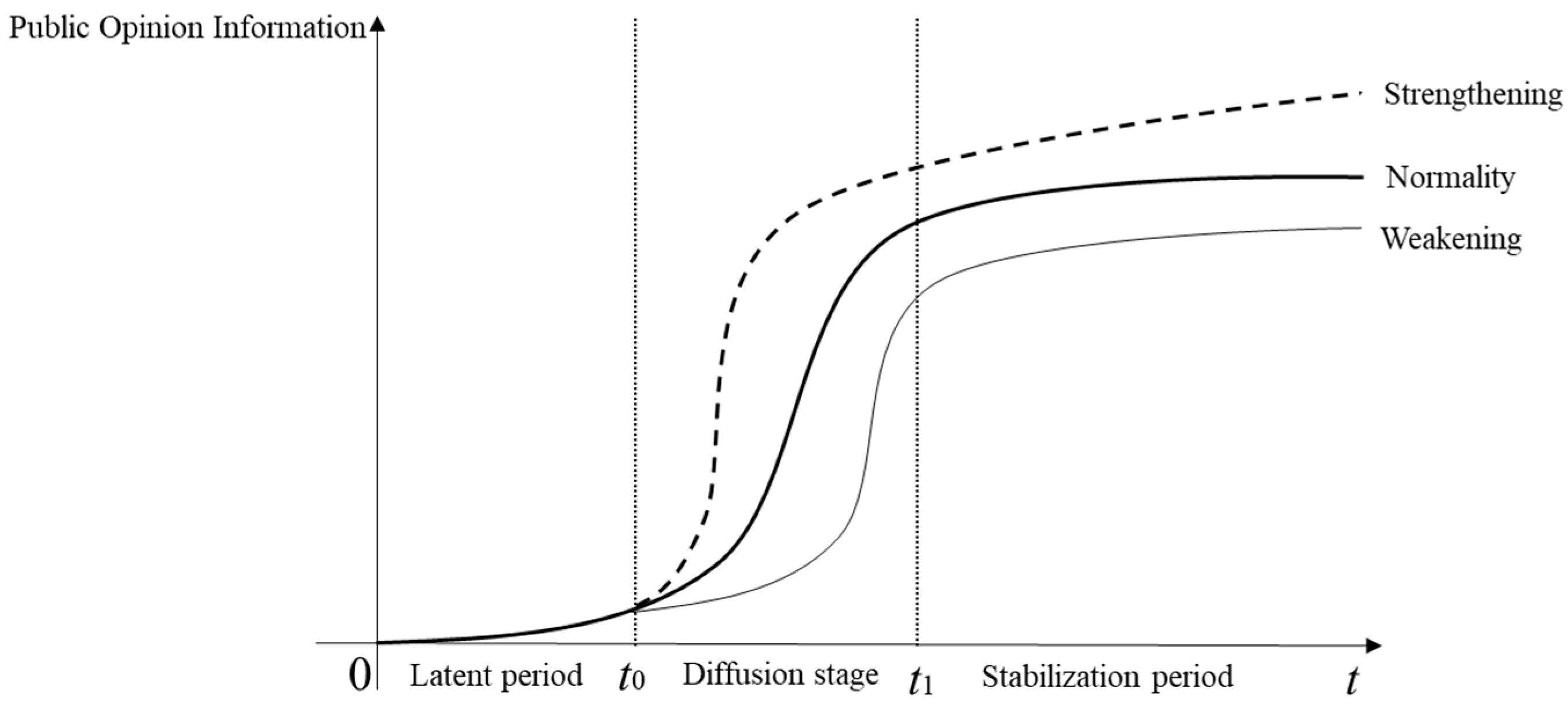

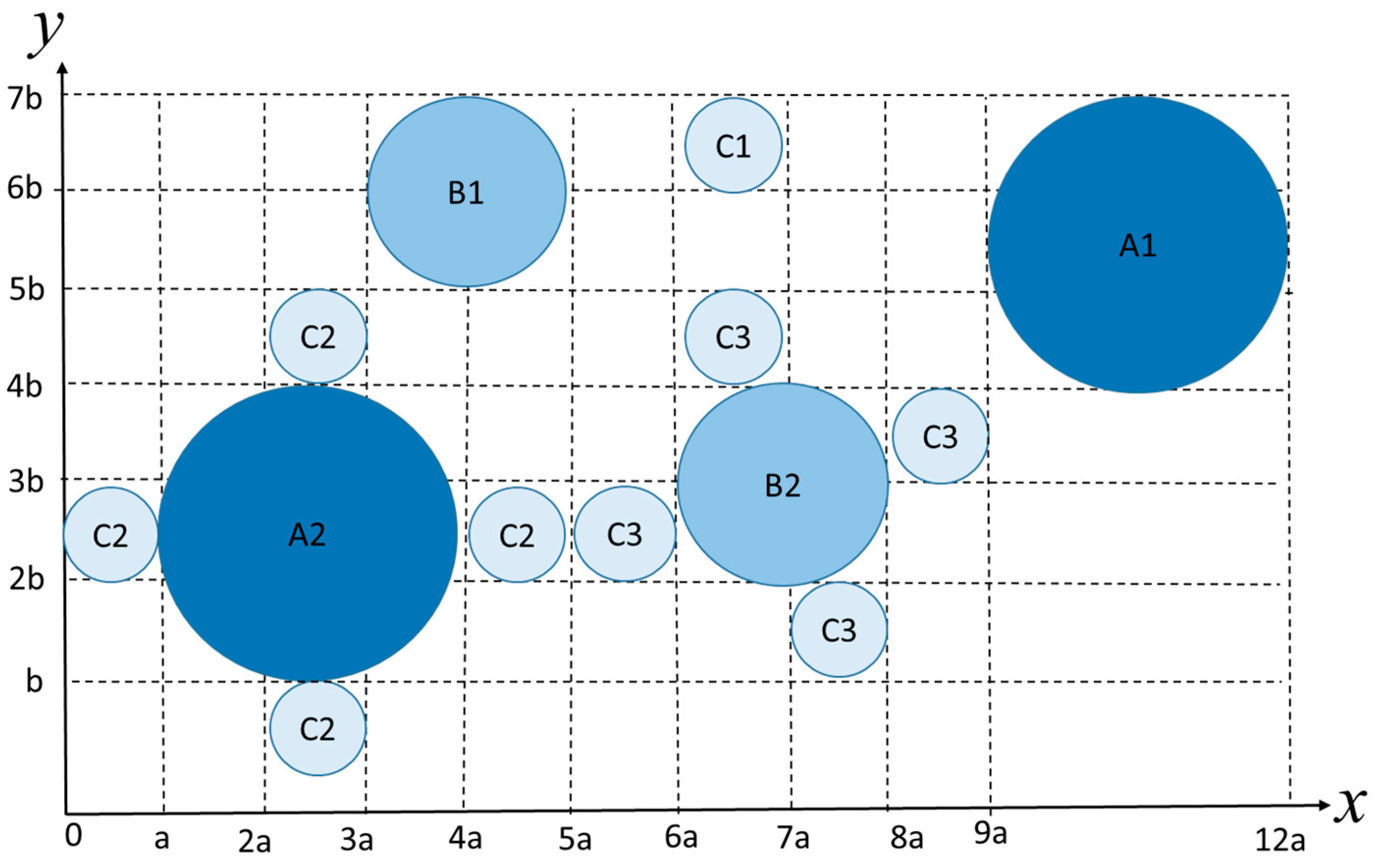

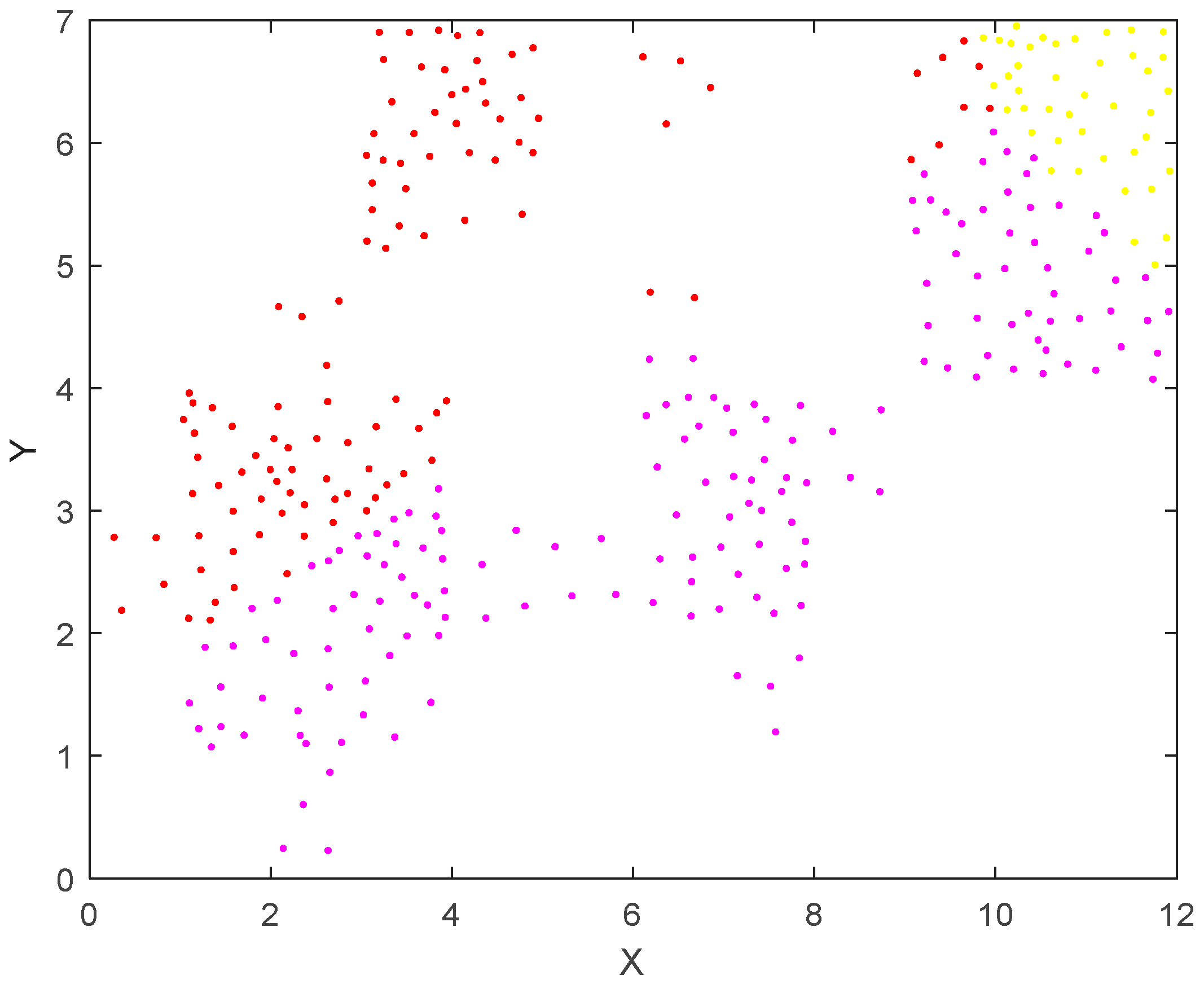




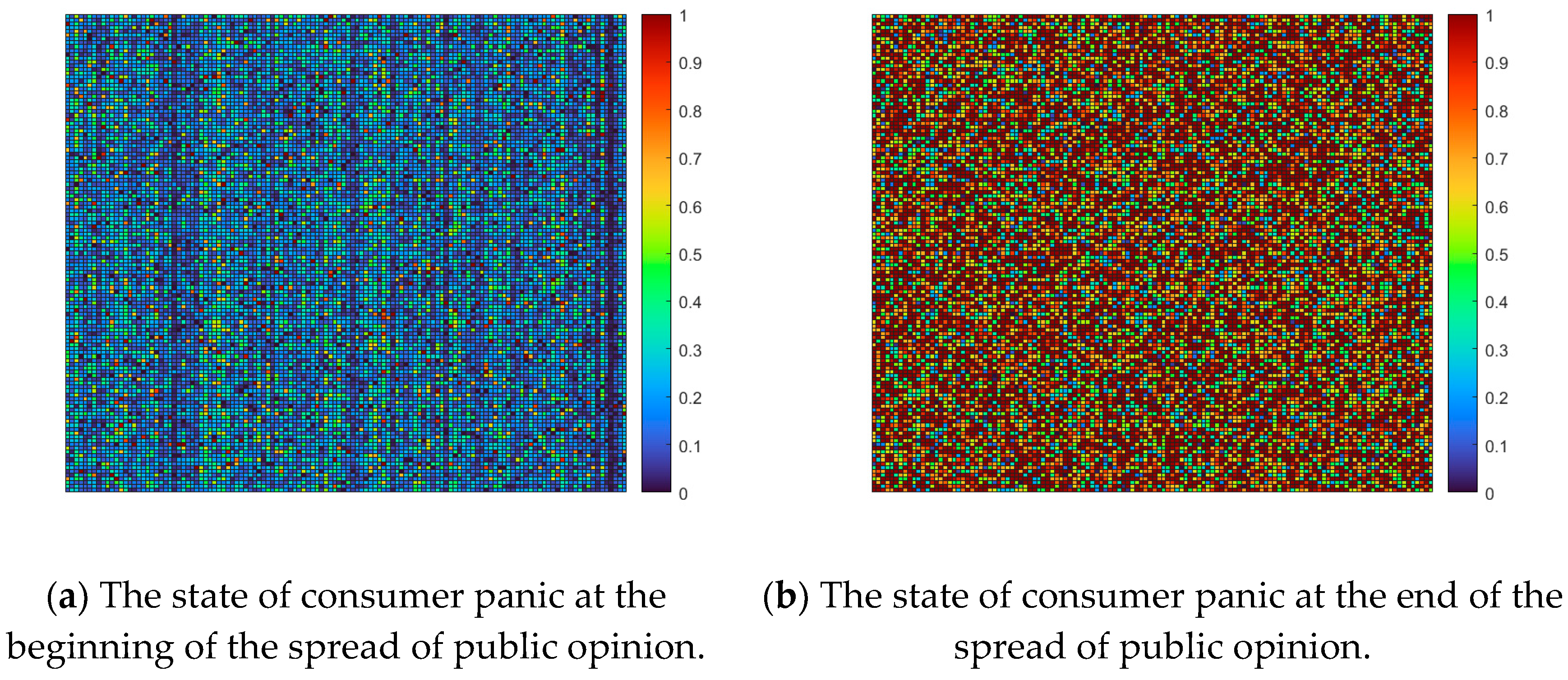

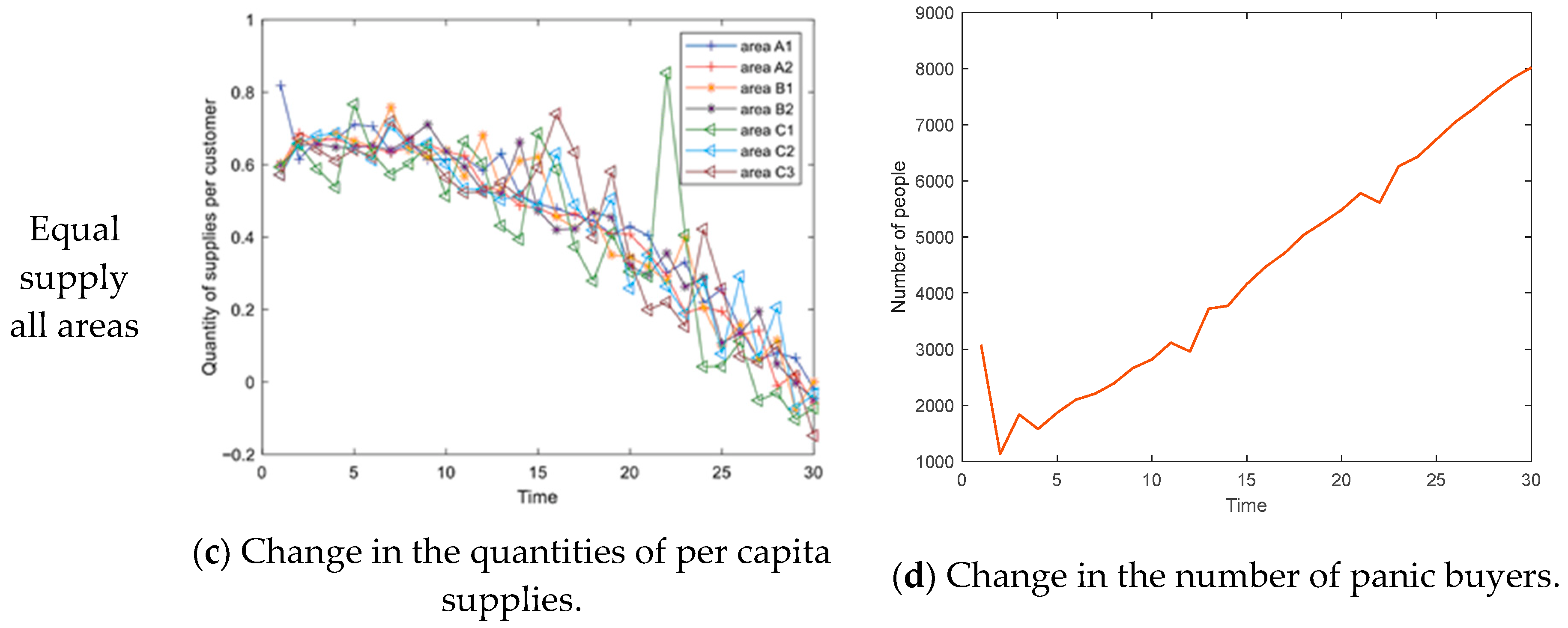
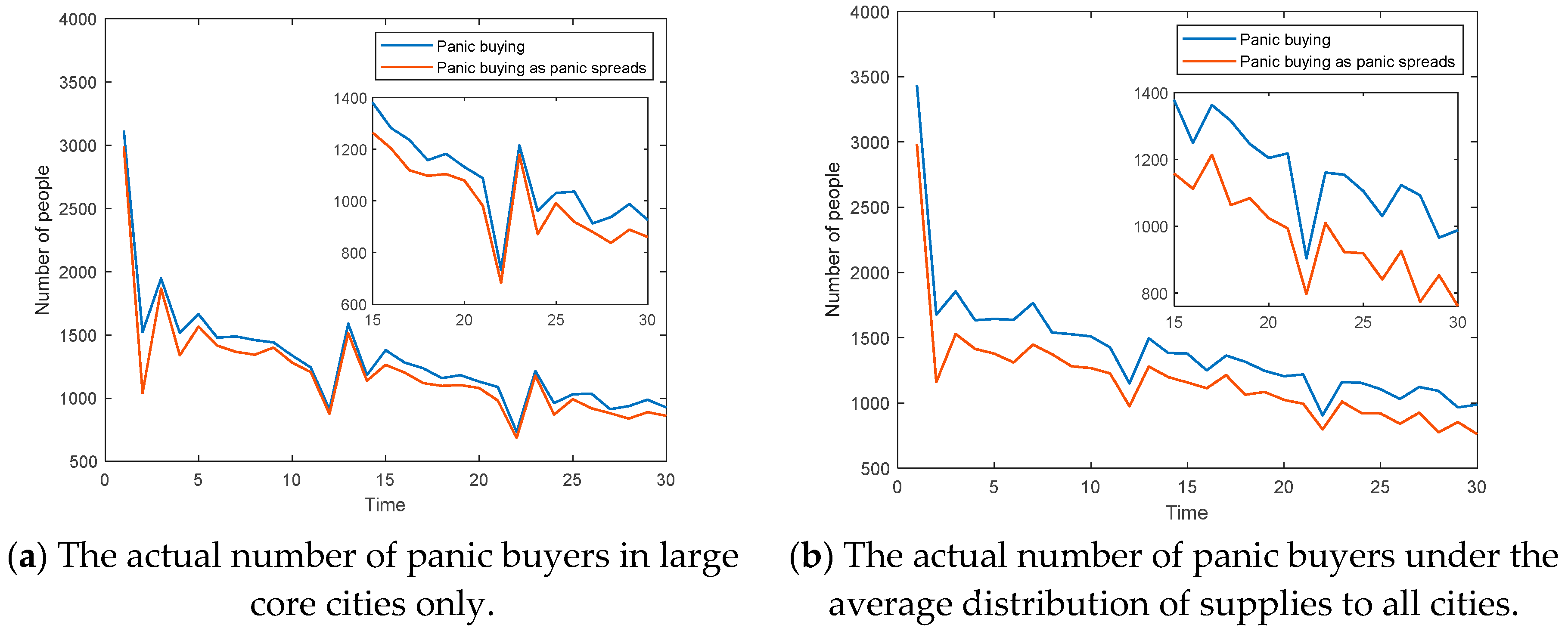

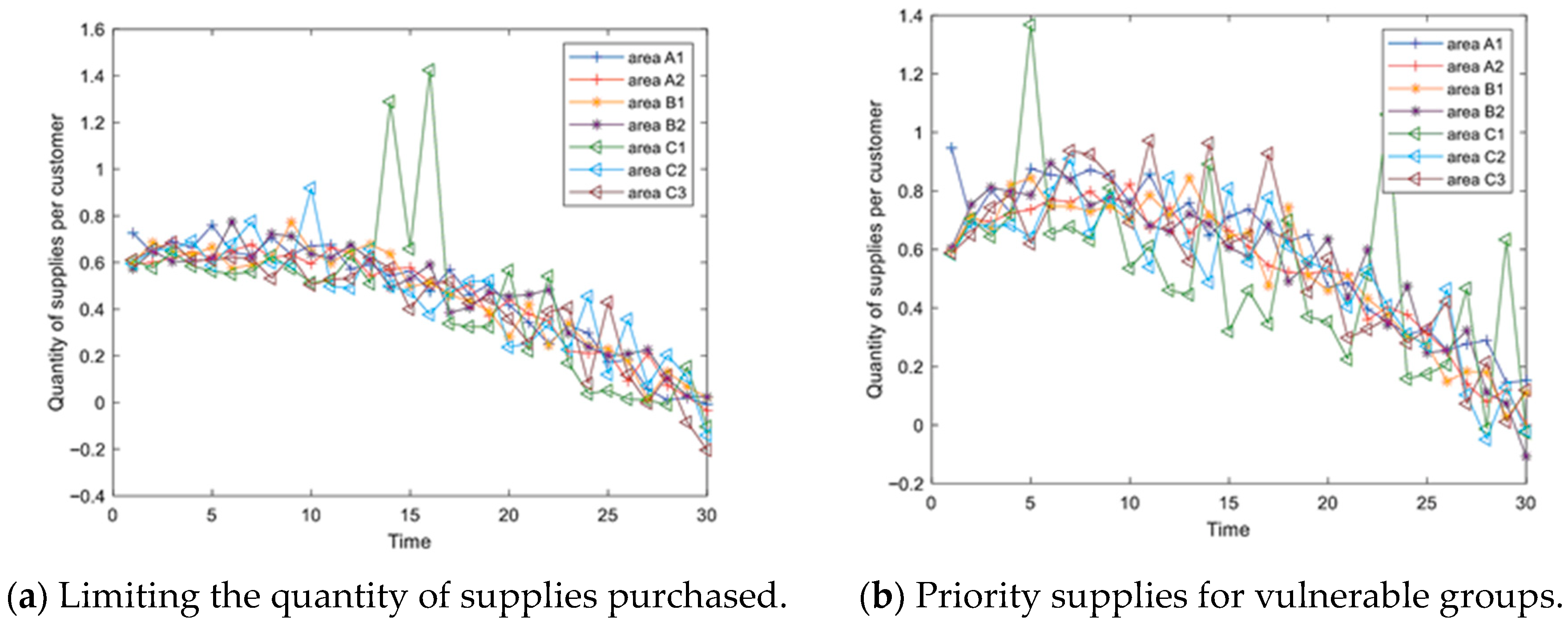
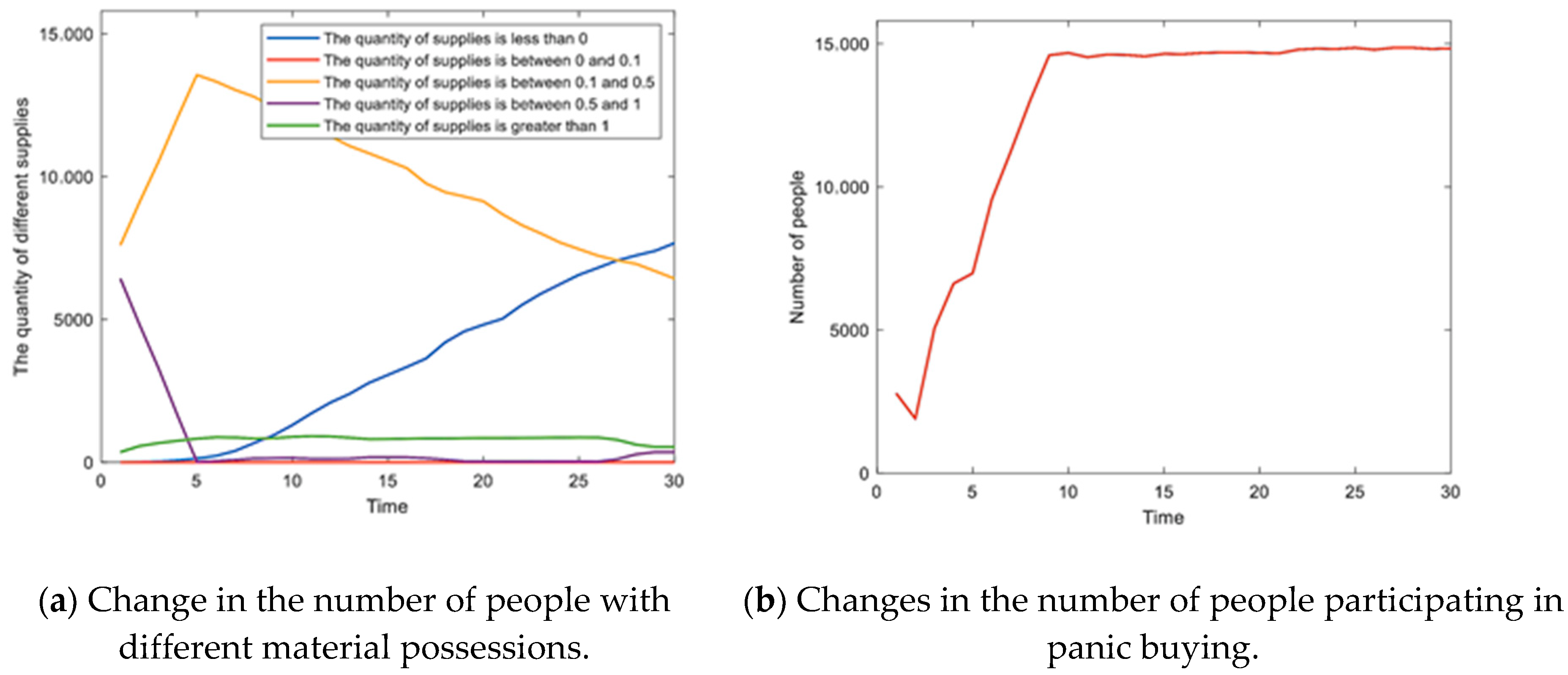


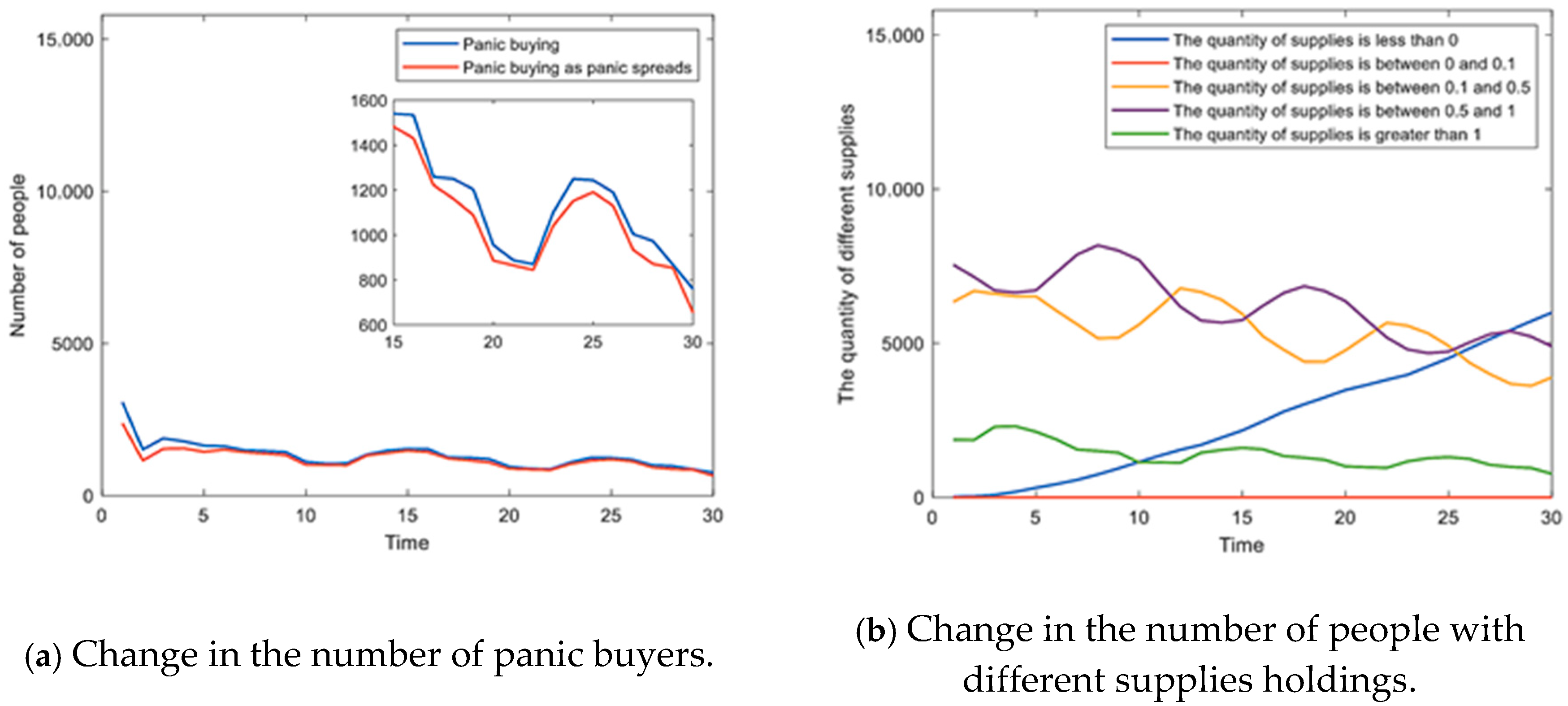

Disclaimer/Publisher’s Note: The statements, opinions and data contained in all publications are solely those of the individual author(s) and contributor(s) and not of MDPI and/or the editor(s). MDPI and/or the editor(s) disclaim responsibility for any injury to people or property resulting from any ideas, methods, instructions or products referred to in the content. |
© 2023 by the authors. Licensee MDPI, Basel, Switzerland. This article is an open access article distributed under the terms and conditions of the Creative Commons Attribution (CC BY) license (https://creativecommons.org/licenses/by/4.0/).
Share and Cite
Wu, S.; Shen, Y.; Geng, Y.; Chen, T.; Xi, L. Consumer Panic Buying Behavior and Supply Distribution Strategy in a Multiregional Network after a Sudden Disaster. Systems 2023, 11, 110. https://doi.org/10.3390/systems11020110
Wu S, Shen Y, Geng Y, Chen T, Xi L. Consumer Panic Buying Behavior and Supply Distribution Strategy in a Multiregional Network after a Sudden Disaster. Systems. 2023; 11(2):110. https://doi.org/10.3390/systems11020110
Chicago/Turabian StyleWu, Shiwen, Yanfang Shen, Yujie Geng, Tinggui Chen, and Lei Xi. 2023. "Consumer Panic Buying Behavior and Supply Distribution Strategy in a Multiregional Network after a Sudden Disaster" Systems 11, no. 2: 110. https://doi.org/10.3390/systems11020110
APA StyleWu, S., Shen, Y., Geng, Y., Chen, T., & Xi, L. (2023). Consumer Panic Buying Behavior and Supply Distribution Strategy in a Multiregional Network after a Sudden Disaster. Systems, 11(2), 110. https://doi.org/10.3390/systems11020110





